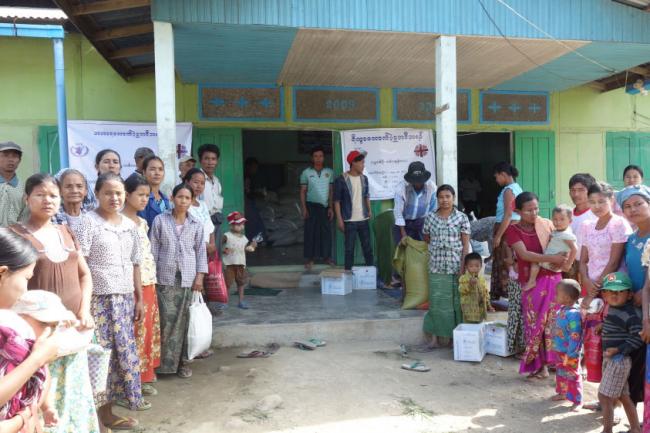
Myanmar: UN recommends measures to address ongoing food insecurity in cyclone-hit areas
In particular, people in the hardest-hit areas of Chin and Rakhine states – already vulnerable to begin with – are still suffering, with paddy production set to fall by up to 15 per cent, constraining food access and pushing consumer prices up, according to the report, compiled jointly by the Food and Agriculture Organization (FAO) and the World Food Programme (WFP).
For immediate assistance, the report recommends the distribution of seeds for the forthcoming monsoon planting seasons, provision of water and pest-resistant storage containers to protect farmer's seeds, along with drying nets and post-harvest equipment, as well as urgent restocking of livestock, such as chickens, ducks, goats and pigs, to avoid a fall in protein intake. The affected communities also must secure fishing equipment, rebuild fishing gear and boats, and rehabilitate fish ponds. They also need more smaller farm machinery for hire.
Longer-term interventions
In addition to those measures, “we are also ensuring a focus on longer term interventions which enable farmers and communities to better cope with future emergencies,” Bui Thi Lan, FAO Representative in Myanmar, said in a press release.
The report also provides a set of recommendations for long-term recovery, resilience building and disaster risk reduction. These include: developing grain banks at communal and regional levels to reduce post-harvest losses; constructing micro-dams in suitable areas and establishing a National Information and Early Warning Unit on Food and Nutrition Security.
Resilience-building initiatives will include rehabilitation and/or rebuilding of household and community assets, mapping of disaster risk reduction systems and training farmers in disaster risk reduction skills to enable them to recover quicker and make best use of emergency recovery inputs provided.
Given the availability of rice and generally well-functioning markets within Myanmar, the report recommends that assistance be provided in the form of cash or vouchers to assist vulnerable people to purchase food at a time of severe food shortages that may hit in the coming months.
“As affected households have faced difficulties in obtaining credit, cash assistance is necessary to resume their livelihoods,” said Domenico Scalpelli, WFP Resident Representative and Country Director.
Since October 2015, WFP has employed cash transfers in relief activities, following its prompt life-saving food assistance within 48 hours of the devastation of national disaster. In addition, WFP has been implementing cash or food for asset activities from November to provide income generation opportunities for affected people primarily relying on day labour. Above all, reconstruction of safer community infrastructure will reinvigorate communities' resilience, he said.
Funding shortfalls
By the end of 2015, WFP had reached half a million people affected by the floods and massive landslides, mostly in Ayeyarwaddy, Bago, Chin, Kachin, Kayin, Magway, Mon, Rakhine and Sagaing States and Regions.
WFP intends to continue its flood response for 104,000 people until mid-2016 to prevent further deterioration of food security and nutrition situation in Myanmar, but faces a funding shortfall of $47 million to meet all food assistance needs there till the end of 2016.
FAO is aiming to meet the immediate agricultural needs of 332,750 individuals still recovering from the 2015 floods. To date, FAO's resilience program in Myanmar has secured financial resources and will provide assistance to around 150,000 farmers and fisher people in the worst-affected areas of Rakhine, Chin and Sagaing. In order to meet all targeted beneficiaries, FAO requires an additional funding of $7.1 million.
The report is based on a Crop and Food Security Assessment ion (CFSAM) conducted in Myanmar in November-December 2015 by the two UN agencies.
Photo:WFP/Ayuka Ibe
Support Our Journalism
We cannot do without you.. your contribution supports unbiased journalism
IBNS is not driven by any ism- not wokeism, not racism, not skewed secularism, not hyper right-wing or left liberal ideals, nor by any hardline religious beliefs or hyper nationalism. We want to serve you good old objective news, as they are. We do not judge or preach. We let people decide for themselves. We only try to present factual and well-sourced news.







